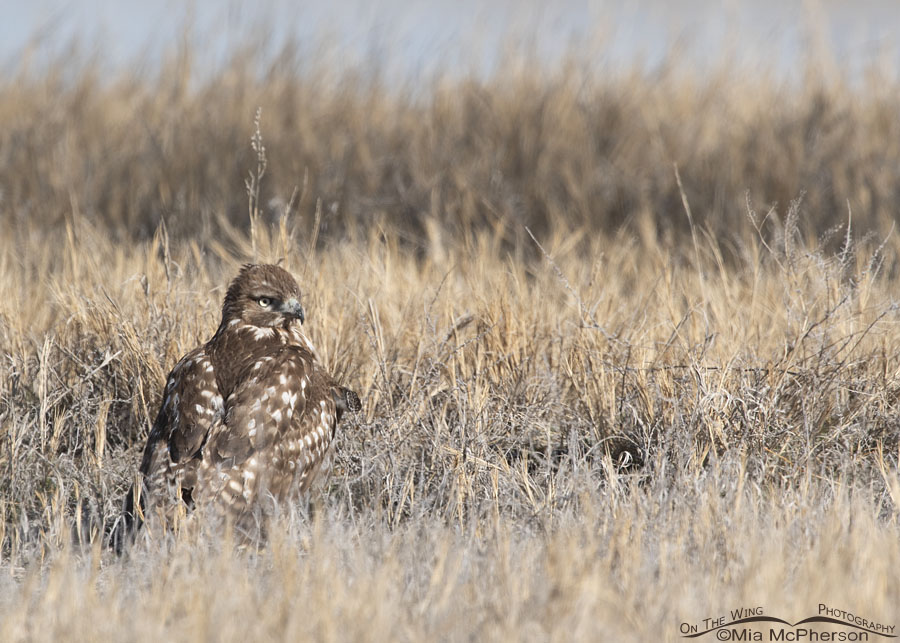About two years ago, I photographed this immature Red-tailed Hawk near the Bear River, on my way out of the auto tour loop of Bear River Migratory Bird Refuge.
 Spring immature Red-tailed Hawk in grasses – Nikon D500, f8, 1/1600, ISO 500, Nikkor 500mm VR with 1.4x TC, natural light, not baited
Spring immature Red-tailed Hawk in grasses – Nikon D500, f8, 1/1600, ISO 500, Nikkor 500mm VR with 1.4x TC, natural light, not baited
The young hawk may have missed capturing prey before I arrived at the location where they were resting on the ground in the grass. I didn’t see the bird land, so I really can’t say what happened before I stopped my Jeep on the road.
That late winter and early spring, I found quite a few young Red-tailed Hawks in the same area. This year, I haven’t found a single Red-tailed Hawk near the Bear River in that area, adult or immature.
That says something. The thing it speaks the loudest to me? There is a lack of prey.
Raptors will not be present if there is a lack of prey.
The good news is that this particular young Red-tailed Hawk, photographed in March of 2022, had survived its first winter.
More than half of immature Red-tailed Hawks don’t make it through their first winter. That challenging period, especially for juveniles facing winter for the first time, results in a high mortality rate due to difficulties in finding enough food to survive.
This beautiful young Red-tailed Hawk made it.
But, if there is a lack of prey, for whatever reason, many more young raptors won’t.
The planned inland port, which wouldn’t be very far from this spot, will have a direct impact on the raptors, as well as other birds and wildlife in the area. Utah’s policies fail to protect wildlife, the Bear River, and downstream, the Great Salt Lake.
Life is good. However, it would be far better if Utah put nature and its citizens before money.
Mia
Click here to see more of my Red-tailed Hawk photos plus facts and information about this species.


How I wish that Utah wasn’t alone in its misplaced priorities. Sadly it isn’t.
Too much development and greed for more money created by commercial growth is all that drives the state of Utah. As we drove up through rural Idaho last week, through wild lands and farming fields we saw a good number of redtails. Idaho is growing also, I don’t know if at the same rate Utah is but I won’t be far behind I am sure. The younger generations just don’t seem to have the same values we have. They are plugged into instant gratification of a screen. Many prefer cities and have never spent quality time outdoors. Playing organized soccer is about they only time the smell the outdoor air.